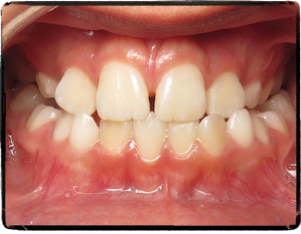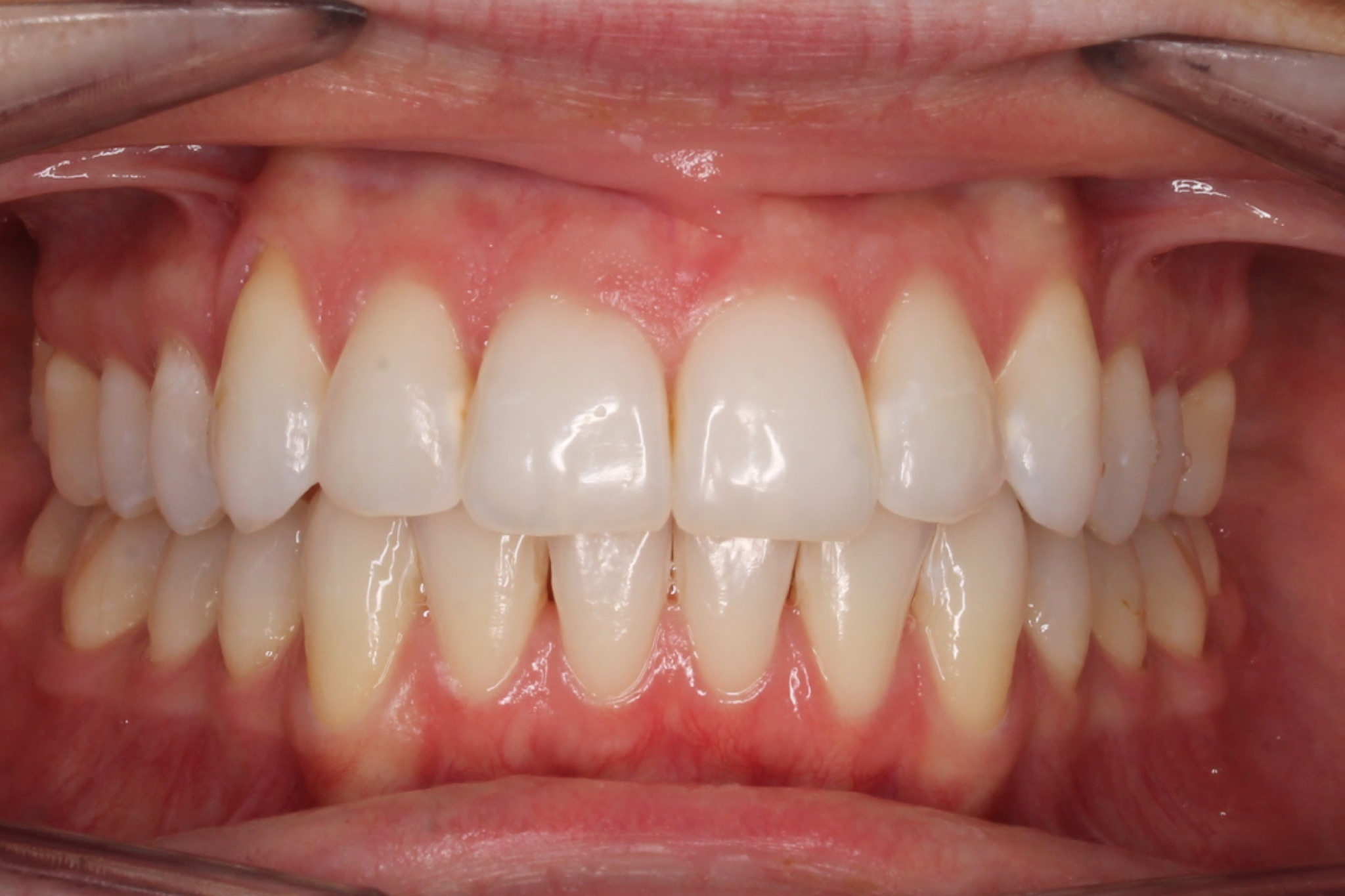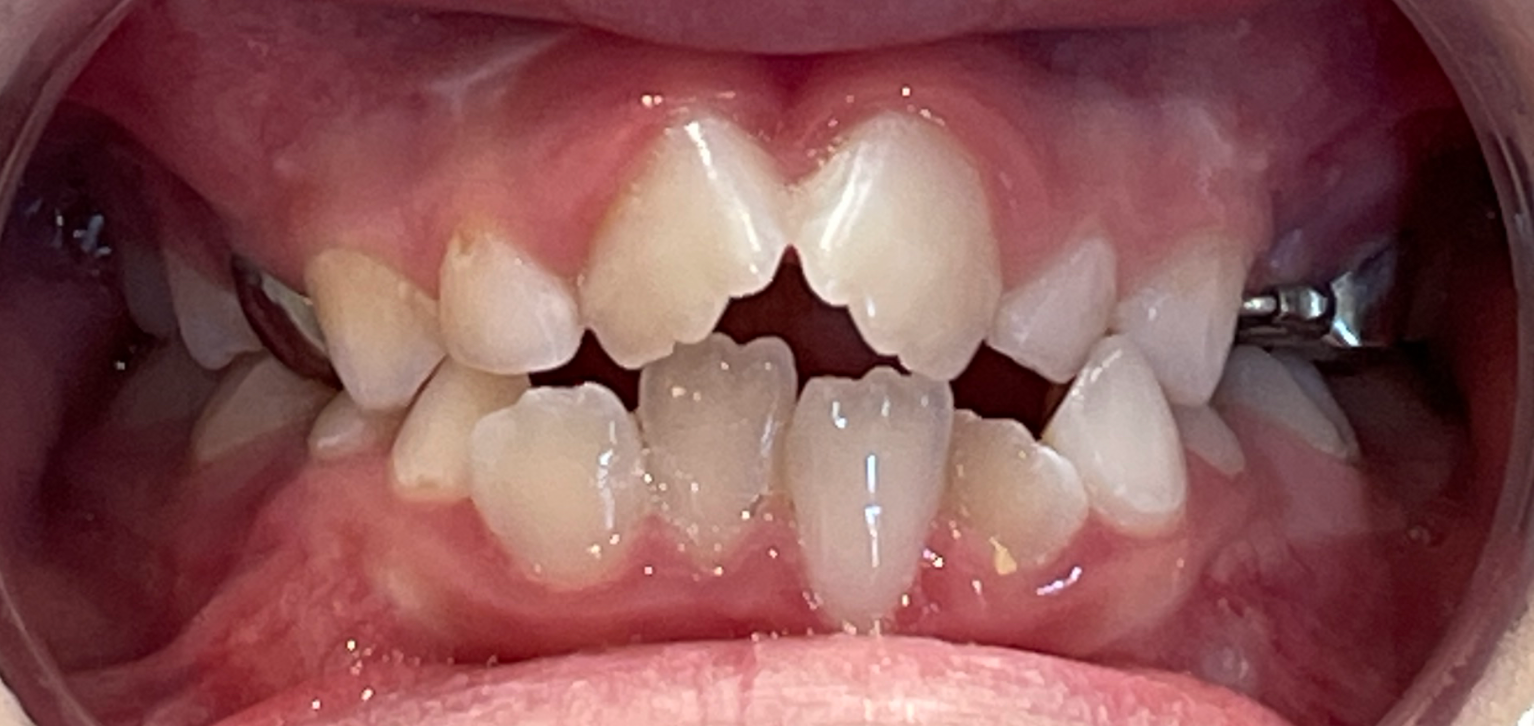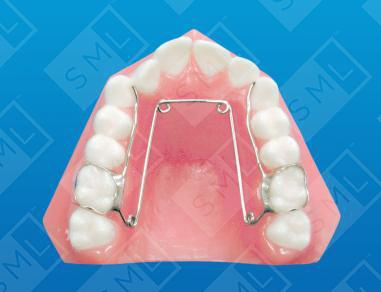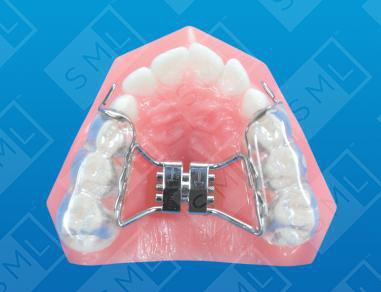One of the most commonly used appliances in orthodontics is the expander. Its design has changed very little over time, and its use is the preferred method for creating a bigger or wider upper jaw.
In this article, we will cover who would benefit from an expander, the different types of expanders, how an expander works, and what your child will experience if an expander is in their mouth.
Who Would Benefit From An Expander?
In general, any child with an upper jaw that is too narrow would benefit from an expander.
Let’s look at some photos of what that may look like.
A crossbite occurs when the upper teeth are on the inside of the lower teeth instead of on the outside. All upper teeth should be slightly wider than the lower teeth (think of a lid on a jar).
When there is a crossbite it can result in asymmetric growth of the lower jaw, chipping and cracking of teeth, and tooth and jaw pain.
This is what a normal bite looks like (when the top is wider than the bottom):
Another reason for an expander is to create a wider arch so that we can fit all of the teeth (and keep all of them). Overcrowded teeth, crooked teeth, and severely crowded teeth are also reasons that an orthodontist will recommend a palatal expander.
An expander is one expansion technique that can be used to achieve the desired expansion.
Alternatives would include braces and clear aligners. These tools, however, are more for dental expansion than skeletal expansion.
At What Age Does A Child Get An Expander?
When expansion of the upper jaw is required, biology is important.
The maxilla (upper jaw) is made up of several bones that do not fuse until puberty is complete.
In order for expansion to be successful, the expander has to be in place before this fusion occurs.
The Biology Of Palatal Expansion
You can think of an upper jaw as having two halves that are connected by soft tissue (collagen and elastin). We call that connection the midpalatal suture. The mid palatal suture is what stretches wider as the palatal expander is activated.
As these 2 bones pull apart, the body begins to grow new bone on the roof of the mouth. The upper arch is made permanently wider as bone regenerates. Another word for palatal expansion is skeletal expansion because it is the bone that widens.
Amazingly, as the palate is widened at the midpalatal sutures, children only feel pressure, not pain. This dental device (although made of metal), exerts forces in the mouth that are well tolerated.
The Right Age For Palate Expanders
As young as 6 or 7 and all the way up to 12 is usually the best time to do a palate expander.
Puberty hits at different times for different kids so early developers should be expanded younger than those children that are later into puberty.
Does The Child Experience Pain?
Most children report only minor discomfort with a banded or bonded type expander. Pain reliever can be taken if needed but would rarely be required past day 1.
Most kids are mildly annoyed by the appliance for the first few days and find that their tongues are busy. Once the appliance is fully inserted you will find that in a few weeks they no longer notice that it is there.
What Are The Types Of Expanders?
An expander can be called many things.
- Expander
- Palatal expander
- Rapid palatal expander
- Palate expander
- Haas expander
- RPE
- Hyrax expander
- Quad Helix expander
Quad Helix:
These orthodontic appliances all have an expansion screw (Quad Helix is the exception). This tiny screw is turned by putting a key into a hole. The turns widen the palate to make more space and width. After each turn a new hole (more accurately, the next hole) is visible to be turned next time.
How Is The Expander Attached?
Expanders can either be banded or bonded to the teeth. This means that a metal ring (see image below) is glued on to the teeth (banded) or the entire appliance is glued to the surface of the teeth (bonded).
Banded Expander:
Bonded Expander:
The metal part in the centre (expander key) sits near the roof of the mouth but not touching it.
We usually try to band or bond on to a few adult teeth as they are a better anchor for the palatal expander.
Why Is An Expander Sometimes Called A Rapid Palatal Expander?
We ask our patients to turn their palatal expanders once per day if they are not yet in puberty.
We slow that down to 2-3 times per week if we think puberty has begun.
Turning a palatal expander once per day is considered rapid in the orthodontic world. Each turn of the palate expander is 0.25 mm. Meaning, in 4 days, 1.0mm of space has been created in the mouth.
The molars are easily able to handle this force during expansion, as is the roof of the mouth, the gums, the teeth, the nose, the tongue, and every other part of the mouth.
We slow down the expansion when puberty has begun as there are often small spicules of bone that have started to grow across the suture on the roof of the mouth. The dental expander device is capable of breaking those small spicules but we don’t want the pressure to cause too much discomfort as we widen the maxilla. We do fewer turns so that the pressure can be controlled better during treatment.
Bone Fills The Palatal Suture?
Yes! After you stop turning the palatal expander because you have enough room for the crowded teeth or enough width for the bite, the body will grow bone to re-establish the small space between the two halves of the maxilla.
The desired width will now become permanent over a period of weeks or months. Your dentist or orthodontist will keep the palatal expander in place until this new bony growth is stable.
One of the reasons palatal expansion is so widely used is that it is predictable and stable.
Will A Gap Form Between Their
Front Teeth?
Yes! As the palatal expander pushes the jaw wider, the palate separates at the middle. This means that front teeth often end up with a gap.
The good news is that that gap generally closes on its own after the turns with the key are completed on the palate expander.
Is There Anything I Can Do To Make The Palatal Expander Feel Better?
Soft and cold foods always feel good when the mouth is sore. Sugarless gum also works great for some kids.
Palatal expanders are usually only uncomfortable for the first couple days so reassurance that it will get better also goes a long way.
If your child is really struggling, ask your orthodontist if you can turn the palate expander every other day until it starts to feel better.
Why Choose Impact Orthodontics For Your Child’s Palate Expander?
We have been doing palate expanders for over 20 years and know what it takes to make the experience as easy and positive as possible.
We widen the maxilla to make room where needed and will keep your dentist in the loop the entire journey.
We have tools like the Dental Pain Eraser that will minimize discomfort as we widen the palate.
For those teens and adults that are post-puberty, we work with an oral surgeon and use palatal expanders to fix long-standing problems.
We’d love to meet you and your child for a new patient exam (free for those under 20) where we will explain what is needed, when the best timing is, costs, alternatives, pros and cons, etc.
We pride ourselves on comprehensive education and an exceptional patient experience. See you soon!



